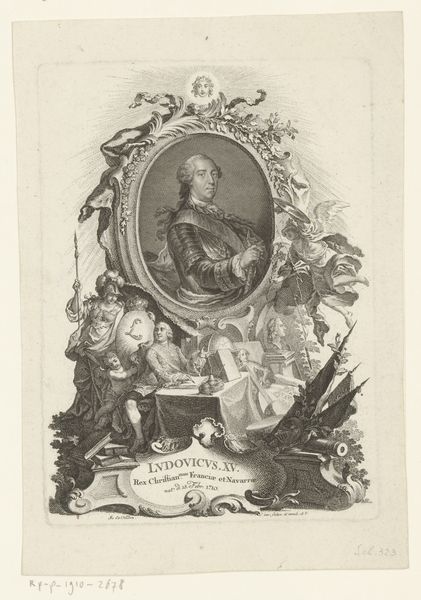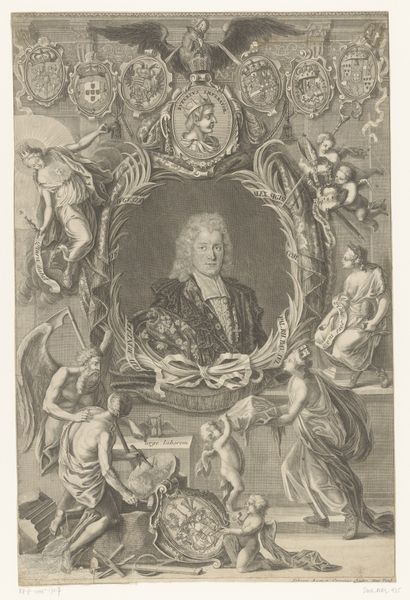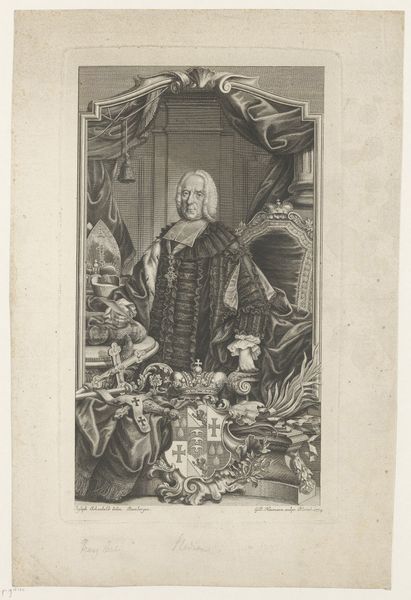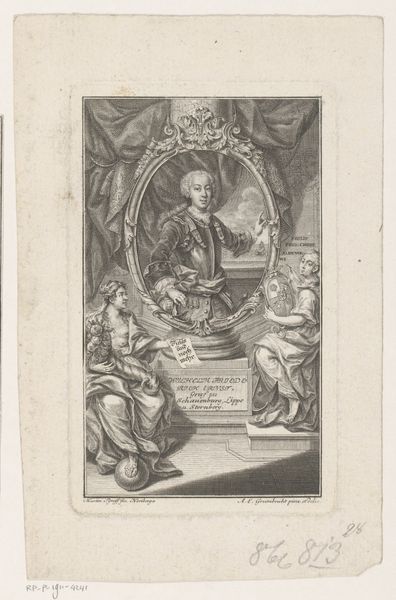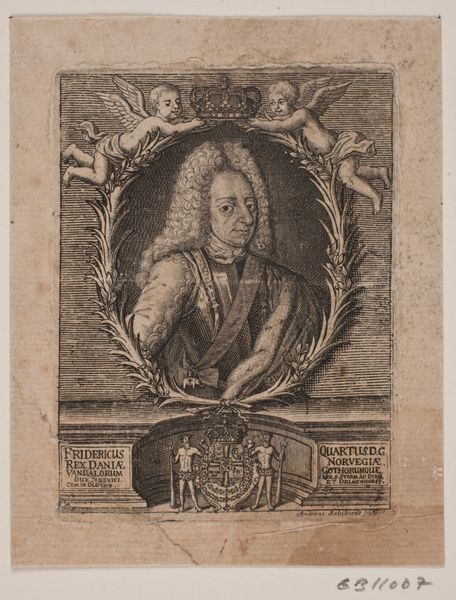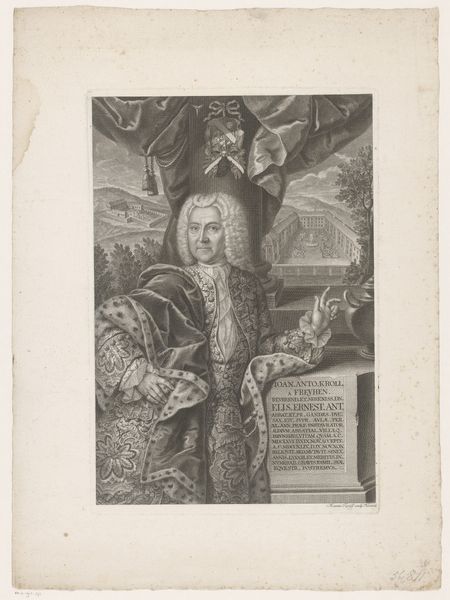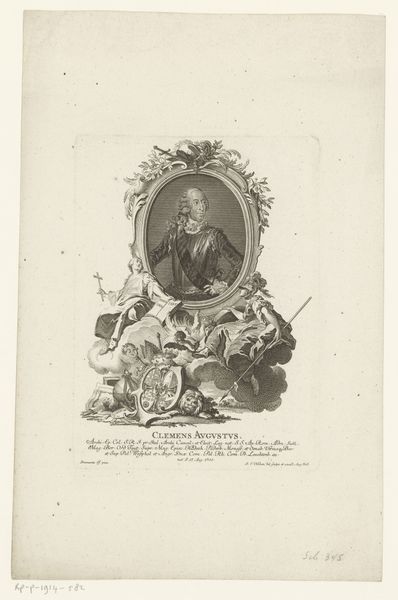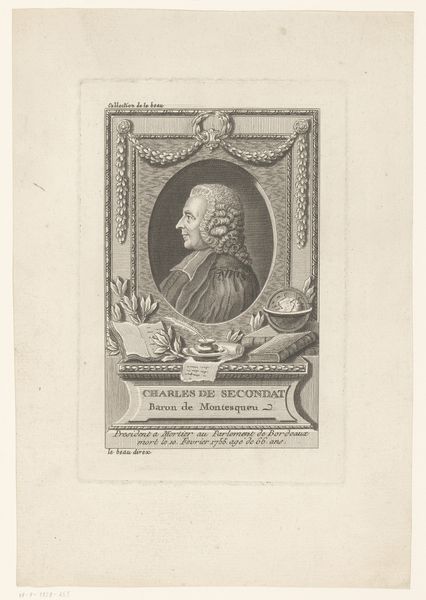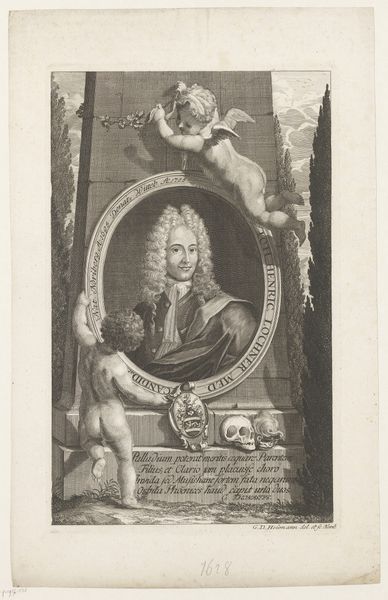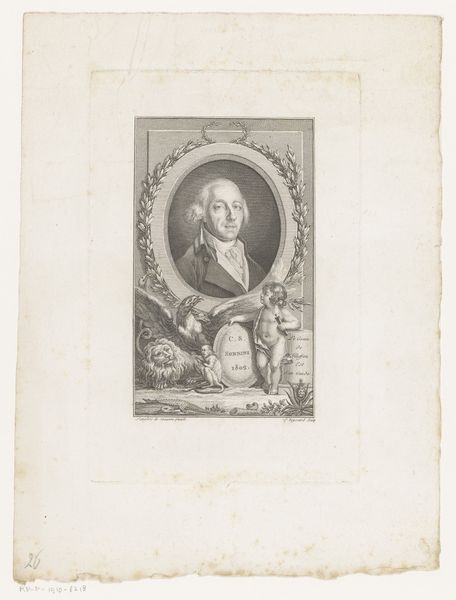
engraving
#
portrait
#
baroque
#
old engraving style
#
pen-ink sketch
#
history-painting
#
academic-art
#
engraving
Dimensions: height 158 mm, width 100 mm
Copyright: Rijks Museum: Open Domain
Editor: Here we have Martin Tyroff's 1738 engraving, "Portret van Georg Friedrich Karl von Brandenburg-Bayreuth." I am struck by the portrait’s highly decorative framing, which seems almost to compete with the central figure himself. How might you approach an interpretation of this composition? Curator: Initially, observe how the portrait's structure is fundamentally organized around contrasting forms: the soft curves of the cherubic figures and ornamental frame against the precise lines of the city depicted below, all unified by the symmetrical arrangement. Consider how this interplay contributes to the overall visual tension and perhaps reflects the subject's position between worldly power and divine right. What role does the balance play, would you say? Editor: The balance… I see how the portrait attempts a sort of visual harmony, yet the components remain quite distinct. The city seems disconnected from the sitter. Is that contrast intentional? Curator: Indeed. Examine the texture created by the engraving technique. The varying densities of lines not only define form, light, and shadow, but also imbue the print with a tactile quality. Notice how this texture affects our perception of the different elements within the composition. Also note the mirroring of form between the angels, and the clouds on the left side of the picture, mirroring an object in the angel’s left hand, juxtapose that with what seems to be an illustration of either a sun or comet on the right. Do you think that could carry significance? Editor: Yes, I hadn’t noticed those mirrored relationships! Now the city below feels less disconnected and more like another symbol of Georg Friedrich Karl's dominion, perhaps a territory to be ruled. Thank you, this has shifted my view entirely. Curator: It's in understanding the structural elements, and the way that they tie back to the image's theme that can offer meaningful observations. The relationship of Georg and the symbols give rise to new connections that can then become something for others to think about, or debate, or support with other pieces from the period.
Comments
No comments
Be the first to comment and join the conversation on the ultimate creative platform.

